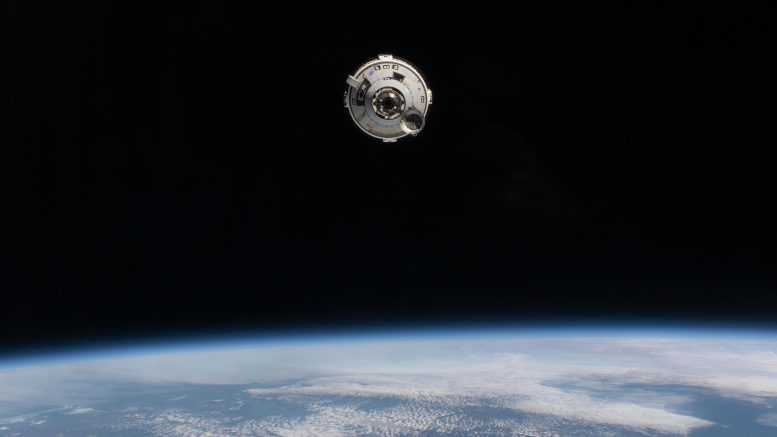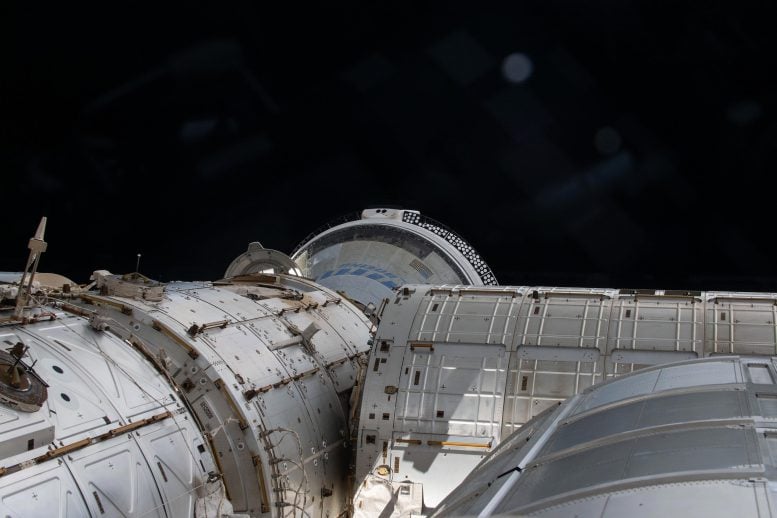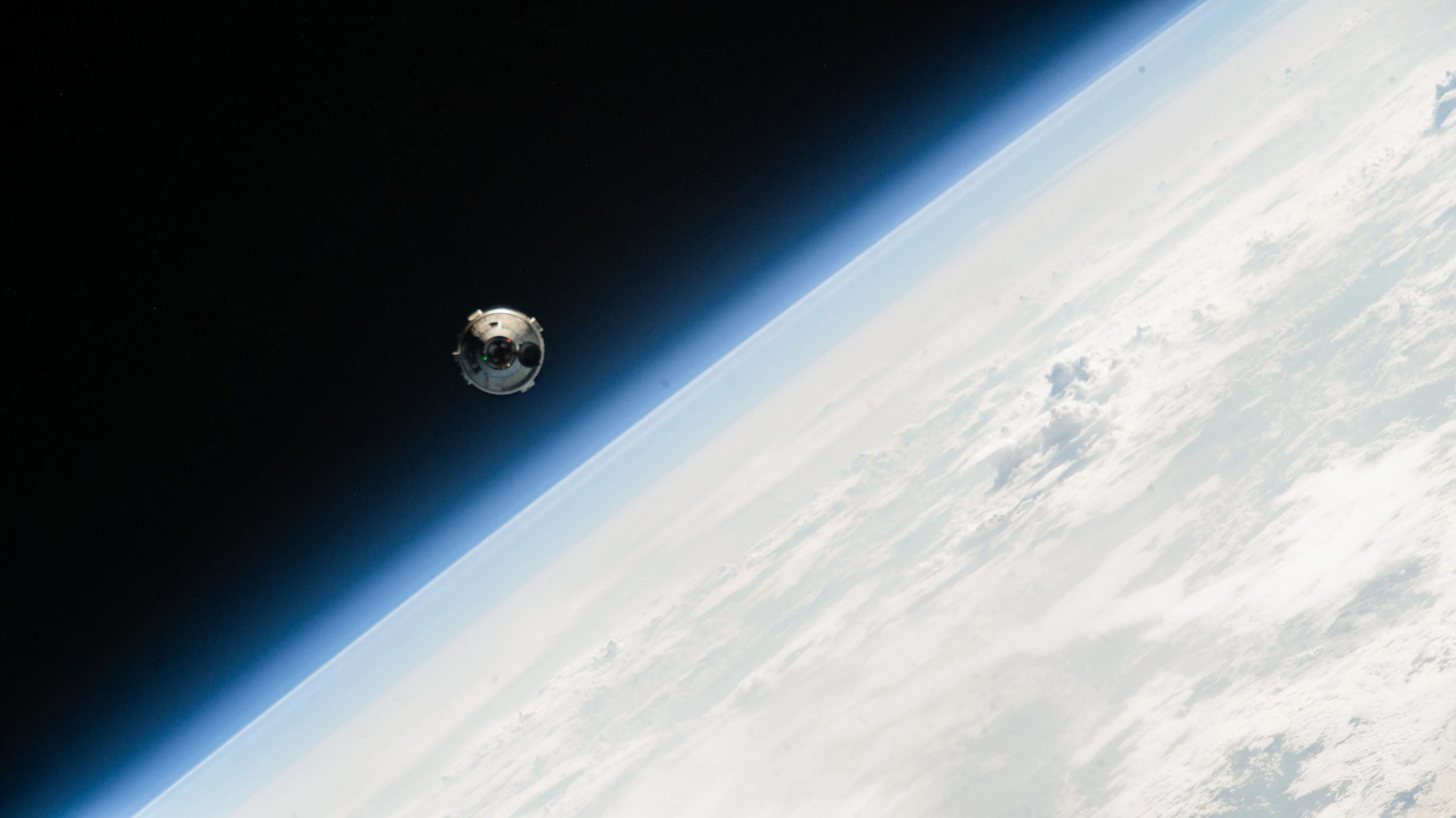Boeing’s Starliner spacecraft, with NASA astronauts Butch Wilmore and Suni Williams aboard, approaches the International Space Station for an autonomous docking as it orbited 257 miles above the South Pacific Ocean. Credit: NASA Television

Boeing’s Starliner spacecraft on NASA’s Crew Flight Test approaches the International Space Station while orbiting 263 miles above Quebec, Canada, on June 6. Credit: NASA
Ground Support and System Evaluations
Meanwhile, ground teams continue to assess and monitor Starliner’s performance and planning for return of the mission no earlier than Tuesday, June 18, pending weather and spacecraft readiness. Starliner is cleared for crew emergency return scenarios from the space station, if needed, in accordance with the flight rules.
In-Flight System Performance and Safety Checks
While Starliner remains docked to station, ground teams are continuing to evaluate propulsion system in-flight observations.
“Butch and Suni are doing great aboard station as ground teams continue digging into the details of Starliner’s on-orbit, rendezvous, and docked performance,” said Steve Stich, manager, NASA’s Commercial Crew Program. “We expected to do a lot of valuable learning on this test flight, and I am extremely proud of how the NASA and Boeing teams are working together to ensure we can safely execute the return portion of the mission.”

This view from a window on the cupola overlooks a portion of the International Space and shows the partially obscured Starliner spacecraft from Boeing docked to the Harmony module’s forward port. Credit: NASA
Propulsion System Analysis and RCS Troubleshooting
One of Starliner’s aft-facing reaction control system (RCS) thrusters, capable of about 85 pounds of thrust, remains de-selected as teams continue to evaluate its performance. Ground teams plan to fire all 28 RCS thrusters after undocking to collect additional data signatures on the service module thrusters before the hardware is expended.
As part of normal operations, the service module separates from the crew module on return, so NASA and Boeing will gather as much data as possible to aid in system assessments.
Mission Safety Evaluations and Valve Inspections
Teams currently are assessing what impacts, if any, five small leaks in the service module helium manifolds would have on the remainder of the mission. Engineers evaluated the helium supply based on current leak rates and determined that Starliner has plenty of margin to support the return trip from station. Only seven hours of free-flight time is needed to perform a normal end of mission, and Starliner currently has enough helium left in its tanks to support 70 hours of free flight activity following undocking. While Starliner is docked, all the manifolds are closed per normal mission operations preventing helium loss from the tanks.
Engineers also are evaluating an RCS oxidizer isolation valve in the service module that is not properly closed. Ground teams performed a successful propulsion system valve checkout on Sunday. All other oxidizer and fuel valves within the service module were cycled normally. The suspect oxidizer isolation valve was not cycled in the recent checkout. It will remain commanded closed for the remainder of the mission while ground teams continue to evaluate its data signatures. The crew module propulsion valves, which are part of an independent system that steers the capsule in the last phase of flight before landing, also were successfully cycled, and all those valves are performing as designed.
Preparing for Starliner’s Return
Mission managers are continuing to work through the return plan, which includes assessments of flight rationale, fault tolerance, and potential operational mitigations for the remainder of the flight. NASA and Boeing will hold a pre-departure media teleconference to provide additional updates before Starliner undocks from the space station.
Conclusion and Upcoming Undocking
With launch and docking already completed, the last remaining dynamic phase of the mission will come at the end of the flight test when Starliner will undock from the orbiting laboratory and then adjust its orbit to move away from the space station. The spacecraft, with Wilmore and Williams aboard, will perform a deorbit burn before entering the atmosphere and landing in the southwestern United States under parachutes and landing airbags to complete the flight.
As part of the agency’s Commercial Crew Program, the mission is the first crewed flight for the Starliner spacecraft.













/https://tf-cmsv2-smithsonianmag-media.s3.amazonaws.com/filer_public/34/31/3431771d-41e2-4f97-aed2-c5f1df5295da/gettyimages-1441066266_web.jpg)



![Ep266: [Lean Series] How to Plan a Responsible Fat Loss Phase Ep266: [Lean Series] How to Plan a Responsible Fat Loss Phase](https://carrotsncake.com/wp-content/uploads/2024/06/Carrots-N-Cake-VIP-Nutrition-Coaching-768x1040.jpeg)
.jpg)

Discussion about this post